This guide is designed to provide an overview of work-based learning models and guidance on implementation. Work-based learning can be valuable for career advancement if combined with supportive practices and clear directives on how skill development is related to the company’s advancement practices. This can be a helpful resource for employers as well as practitioners and educators to discuss work-based learning with a business audience.
This toolkit by the Department of Labor provides steps and resources to start and register an apprenticeship program. When delivered appropriately and connected to advancement opportunities, apprenticeships can strengthen job quality by increasing worker stability and mobility. This toolkit could be particularly useful for a business or labor organization, a workforce intermediary, a community-based organization, or an education institution developing an apprenticeship program.
This report details findings from a landscape scan that identified emerging trends and field-building opportunities for sector partnerships that are working to embed equity and reduce disparities. This can be a useful resource for workforce practitioners seeking to frame their work around equitable outcomes.
This report details the findings of a stable scheduling study conducted at Gap stores by an interdisciplinary team of academics. During the pilot study, stores in San Francisco and Chicago implemented stable scheduling practices, including two-week advance notice, elimination of on-call scheduling, tech-enabled shift swapping, and targeted additional staffing. Findings included a 7% increase in median sales and 5% increase in labor productivity at treatment stores. This study’s findings help to demonstrate the potential business benefits of stable scheduling.
This publication details seven key components of a modernized tuition assistance program, including flexibility, inclusiveness, affordability, and support. This information can be useful to employers seeking to develop or enhance a tuition assistance program and to practitioners who work with businesses to improve worker mobility.
This step-by-step guide by Upskill America, an initiative of the Economic Opportunities Program, and the Institute for Corporate Productivity details the steps to change an organization’s tuition assistance program to a tuition disbursement program, providing financial support for education up-front rather than offering reimbursement after a worker has completed a program. This simple change to the structure of a tuition assistance program has important job quality and equity implications; it can make education and upskilling accessible to workers who are eager to learn but lack access to resources to pay for school. This tool is useful for employers and all practitioners who work with them to strengthen job quality.
This policy brief is designed to inform the development of paid family and medical leave policies that can reduce inequalities for workers. It provides guidance on specific elements of paid leave policies such as ideal duration, eligibility requirements, and outreach strategies. While the primary audience for this tool is policymakers, it could also be useful for businesses who are crafting or re-shaping their paid leave policies or for providers advising businesses and policymakers.
This racial equity tool is designed to support workforce development organizations and practitioners to advance their racial equity practice. The assessment guides workforce development organizations and practitioners to evaluate their programs, operations, and culture in order to identify areas of strength and opportunities for growth. Practitioners can use the toolkit to explore approaches that support institutional racial equity, evaluate their current efforts, and plan next steps to strengthen their practices.
In recent decades, workers’ paychecks have remained stagnant, despite increases in productivity. At the same time, returns to wealth have increased. Strategies that transform workers into owners, such as employee share ownership strategies, have the potential to give working people a stake in our growing economy and include them in the nation’s prosperity. With employee share ownership strategies, employees may hold a majority of shares as participants in an Employee Stock Ownership Plan (ESOP), be members of a worker cooperative, or have a meaningful stake in a public company or start-up. Business leaders often emphasize the value of employee engagement, and many have found that these strategies contribute to higher levels of worker engagement, relative to that of peer companies. In this event, panelists discuss how employee share ownership strategies help workers to share in the success of their companies, while promoting business success.
In the coming decades, the success of the US economy will become increasingly tied to the success of Latino Americans. With 58 million Latinos in the US today and projections of population growth in the years to come, Latino workers, consumers, and business owners will shape the present and future of the US economy. How can we secure economic stability and mobility for Latino workers, families, and communities? What policies, practices, or strategies could help to improve job quality, increase skills and access to high-quality jobs, and expand business ownership opportunities?
The Aspen Institute Economic Opportunities Program (EOP) and the Latinos and Society Program (AILAS) invite you to watch “Drivers of Opportunity: How Will Latinos Shape the Future of the American Dream?”
